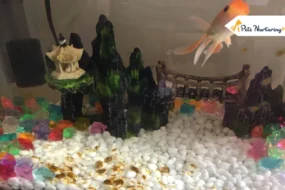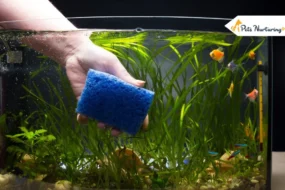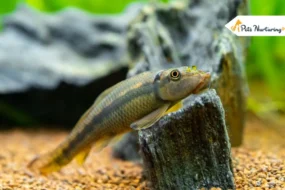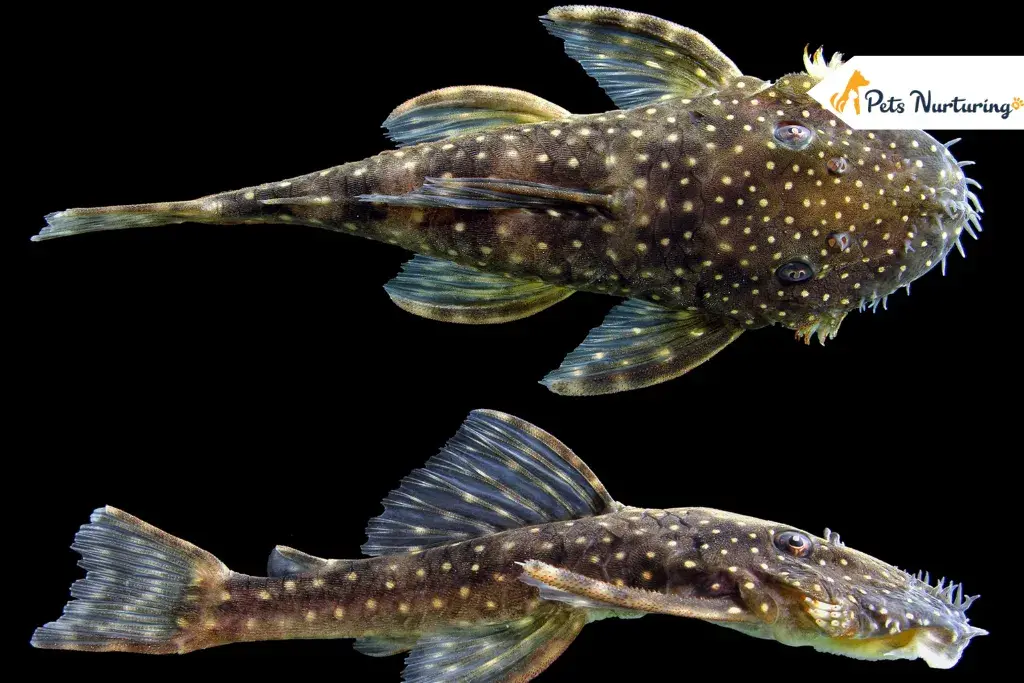
The bristlenose plecostomus have become popular worldwide as they remain smaller than their catfish cousin throughout life and are peaceful fishes that are suitable for community tanks.They are also known as the Bristlenose catfish, pleco fish, bristlenose plecostomus, bushynose pleco, picasimus and bushynose catfish. They are characterized by the intricate patterns on their smooth body and mouth that is shaped like a sucker.
Plecos are vegetarian and make terrific tank cleaners, which makes them an amazing choice of fish for your tank. Their peaceful and sociable nature also helps them get along with other fishes in the tank without any problems. They are easy to care for and fun to watch.
Overview Of Bristlenose Pleco
Bristlenose Pleco Of Overview
Scientific Name: Ancistrus Cirrhosus
Common names: Bristlenose catfish, pleco fish, bristlenose plecostomus, bushy nose pleco, picasimus, bushy nose catfish
Origin: South America
Habitat: Amazon and its rapid flowing tributaries
Care level: Easy to intermediate
Temperament : Suitable for a large community tank, peaceful
Bristlenose plecostomus size: 5 inches
Lifespan: 5 years
Diet : Herbivore
Colors or patterns: Brown, grey or green with yellow or white spots or albino (light yellow or pink)
Minimum fish tank size: 40 gallon
Tank level: Bottom dweller
Temperature : 73 to 81 degrees Fahrenheit
pH of water: 5.8 to 7.8
Hardness of water: 2 to 30 dGH
Breeding : Egglayer
Tankmates: Snails, grazing fishes, guppies, neon tetras, platys, mollies, angelfish, barbs, catfish, and bettas
Origin and Distribution

The bushy nose pleco originates mainly in South America’s fast-flowing waters. They are native to the Amazon river basin and its fast-flowing tributaries. They are also known to be found in some parts of central as well as South America.
They were classified initially in the 1800s but have since become popular worldwide due to their uniqueness.
Appearance
The bristlenose or the bushy nose plecostomus’ size makes them the smallest among all catfish species. Some identify them as very unique looking whereas some people find them odd looking. If you fall into the former category, you are in the right place.
The bristlenose plecos are green, brown, olive, or grey with yellow or white spots on their body. Some may even show uneven colouration with dark and light splotches on various body parts. Most plecos have a light coloured abdomen and a dark coloured back.
This colouration helps them evade trouble by blending in with the substrate of the amazon basin.
Some plecos are completely white due to a mutation leading to albinism, they are hence known as albino bristlenose pleco or just albino pleco.
The bushy nose pleco has a flat, fat body and wide head. The most defining feature that even gives them their names is the bushy nose appendages that sprout from their snouts.
Their bristles or tentacles start to appear when they reach maturity around 6 months of age. All bristlenose plecos show the presence of these bristles.
The bristles are much more prominent in males than in females. In males along with more length, they even grow higher up on the head whereas in females they sprout around the mouth area.
The mouth of a bristle nose plecostomus is located at the bottom of their body and shaped like a sucker, which helps them in consuming algae along with clinging onto vertical surfaces. Their head is wide, short, and plump.
Their bodies are covered in bony plates which offer them protection from aggressive prey in the wild. They also have a pair of abdominal fins, pair of pectoral fins, and a large dorsal fin on top.
Bristlenose Pleco Size
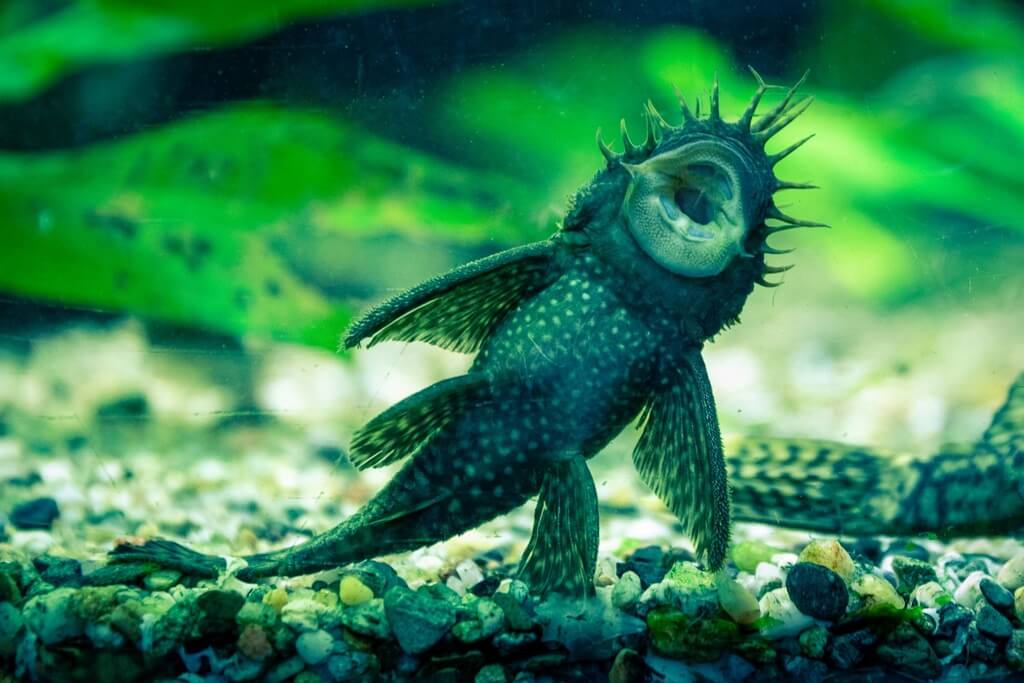
being the smallest of all catfish species the bristlenose pleco size ranges from 3 to 5 inches. It takes them a long time, even up to 2 years to reach their full size. The smallest of all is the spotted dwarf hypancistrus pleco which grows a maximum of 2.5 inches.
Based on their color and pattern, the bristlenose plecostomus is classified into below categories:
- Albino bristlenose pleco or albino pleco: the albino pleco is one of the most popular ones among aquarists due to its striking light yellow or pink colouration. You can even make out a faint yet beautiful marbling and spotting pattern on them
- Super red bristlenose pleco: as the name suggests, the super red bristlenose pleco has pretty much light red to orange color all over its body. This colouration of the Super red bristlenose pleco makes them stand out in your tank significantly irrespective of the other fishes in there.
- Longfin bristlenose pleco: these have very long and flowy fins that move gracefully when they swim. They are amazing to observe and hence, very popular.
- Starlight bristlenose pleco: the body of the starlight bristlenose pleco is completely black with white dots spread all over it like stars. They even have thin white strips on top of caudal and dorsal fins.
- Calico bristlenose pleco: the body of the Calico bristlenose pleco is mostly orange with some black shadowy patches scattered over it.
Behavior and Temperament
Bristlenose plecostomus are among the calm, peaceful, and relaxed species of fish. They are docile beings that are known to do well in community tanks with other peaceful varieties of fish.
These fishes prefer to spend most of their time at the bottom of the tank and do not bother much about who occupies the higher levels. They are less active during the day and are often found relaxing among the tank flora or hiding in their caves., Diet and More | Pets Nurturing
At night, they become much more active and look for food in the substrate. Once they find an algae rich spot, they stay there and consume as much as they need before the sun pops up.
Even though they are peaceful, avoid housing two male bushy nose plecos together or with another species of similar-looking fishes.
Bristlenose Plecostomus Care
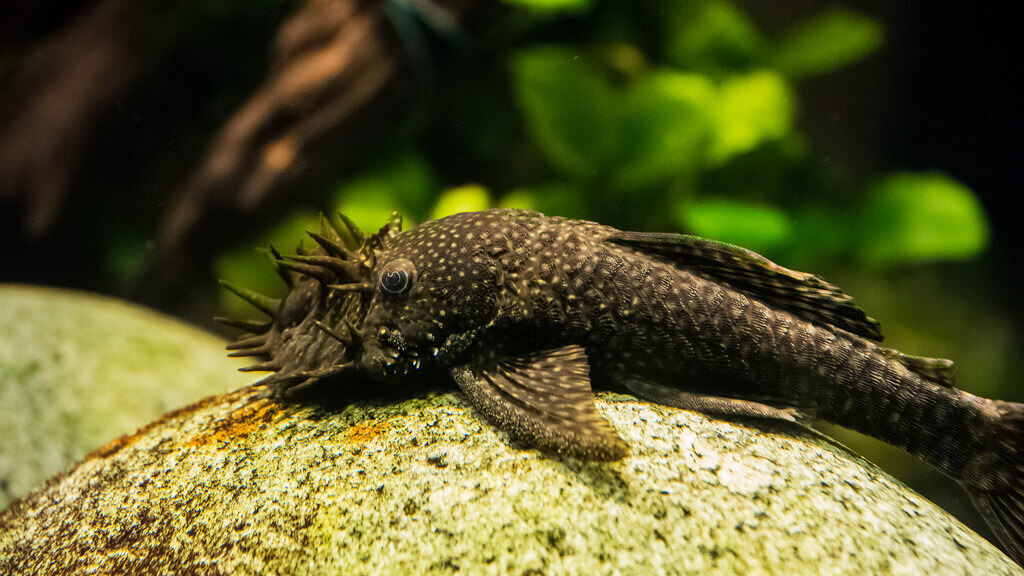
Diet
Plecos are herbivores and thrive mainly on algae or spirulina, so you can feed these once or twice daily. They can be fed granules or flakes. They also feed on small insect larvae occasionally in the wild, so you can also supplement their diet with blood worms.
Lettuce, peas, cucumber, carrot, spinach, and zucchini are good treats and can be fed occasionally for a change. It’s easy to tell if their nutritional needs are being met by seeing their colouration. Healthy fishes show brighter colors and unhealthy ones may look dull.
They also scavenge the bottom layer of the tank for detritus and algae and provide a big helping hand in keeping the tank clean. Add driftwood to their tank as it provides a good base for the growth of algae that your fishes will enjoy.
They also eat algae off the plant leaves without consuming the leaves as such. If you notice your bristlenose pleco munching on leaves, it’s an indication that their nutritional needs aren’t met and you may be required to increase the amount or frequency of their food.
Tank Requirements
A minimum of 25-gallon tank is required for keeping a bristlenose plecostomus, which must be doubled if you plan on adding two or more. The size of the tank needs to be increased further if you are planning on keeping them with other fish.
Since they are bottom dwellers, you have to add plants and decorations accordingly. They spend most of their time scavenging among plants or hiding during the day. So make sure you add a lot of plants and also provide them with a hiding spot.
Add dr your tank as it’ll be a natural breeding ground for algae, which in turn is beneficial for your plecos. Even though the plecos do a lot of cleaning, you can’t rely on them completely to keep the tank clean. You need to have a filter to remove the waste produced by these fishes.
Add canister filters that work with an under-gravel water system to keep the bottom of the tank clean and oxygenated for your plecos as they prefer well-aerated water with a little current.
Do not use any substrate that they can mistake for a portion of food. Sand and gravel are good as substrates.
Water Conditions
Bristlenose plecos do well in a wide range of water conditions like hard to soft and acidic to alkaline. We recommend changing the water of their tank once every two weeks or even monthly is okay and keeping the flow moderate.
The plecos are used to warm waters and steady temperatures, thus maintaining the water temperature between 73 to 81 is recommended to keep them happy and healthy.
The hardness of water must be maintained at 20 to 30 dGH with a pH range of 5.8 to 7.8.
You can install a thermometer and a hydrometer in your fish tank to keep a regular check on these parameters.
The bushy nose pleco is a hardy fish but if you notice any odd behaviors, dullness in colour, eating of plants, or spending more time at the upper level, please consult a vet.
Final Words
Now with all this information, we hope you have a much better and clearer idea about keeping and raising a bushy nose pleco. These little creatures are easy and fun to take care of and very satisfying to watch.
Discover more :
- 20 Best Algae Eater Fish That You’ll Love
- Axolotl Colors : Common & Rare Types of Axolotl Morphs
- Jack Dempsey Fish Overview, Care, Appearance, Diet & More








